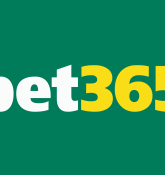News in Focus


With each year passing, the crypto market is shaping up and becoming more structured and mature.

The US cannabidiol (CBD) market has evolved into a highly competitive, diversified sector characterized by stringent quality benchmarks, growing consumer trust, and a hybrid retail landscape.

Star Health and Allied Insurance has drawn renewed attention from market participants following its Q4 FY25 earnings release and forward-looking commentary.

In a season defined by fluctuating fortunes and breakout performances, the upcoming IPL 2025 clash between Punjab Kings (PBKS) and Lucknow Super Giants (LSG) is more than just another fixture.

Adani Green Energy Ltd (AGEL) has reported a robust set of Q4FY25 numbers, with a 31% YoY rise in EBITDA and 44% growth in power sales, driven by higher operational capacity and improved plant util
Main Regional Stories

In its latest research note, Motilal Oswal has reiterated a ‘BUY’ rating on Varun Beverages (VBL), India’s largest PepsiCo bottler, citing strong volume growth, robust operational efficiency, and improved profitability.

Jio Financial Services has recovered nearly 16 percent during the last one month. The financial services major promoted by Reliance Industries has taken support from all-time lows at Rs 198, touched during the recent market sell-off.

In a development that has rocked the cricketing community, South African pace spearhead Kagiso Rabada has been provisionally suspended after testing positive for a recreational drug.

Warren Buffett, the legendary investor often referred to as the “Oracle of Omaha,” has announced his intention to step down as Chief Executive Officer of Berkshire Hathaway by the close of 2025.
TopNews Arab Emirates
- UAE’s Sharaf Group Announces Rs 5,000 Crore Investment in Kerala
- Dubai Introduces 3D-Printed Solar-Powered Rail Bus for Urban Mobility
- Dubai’s Sky Palace: The Ultimate Luxury Penthouse Listed for $51 Million
- Noida International Airport to Start Flights for Dubai, Singapore, Zurich, Brussels and Munich
- Abu Dhabi Airports Achieves Record Passenger Growth in 2024
TopNews Hindi
- पीएनबी हाउसिंग फाइनेंस (PNB Housing Share) के दमदार Q4 प्रदर्शन से निवेशकों में उत्साह
- मारुति सुजुकी Maruti Suzuki Share पर “BUY” रेटिंग, लक्ष्य मूल्य Rs 14,001: प्रभुदास लीलाधर
- IREDA के शेयरों में 1.14 प्रतिशत की गिरावट; टियर-2 बॉन्ड से Rs. 910 करोड़ जुटाए
- जीएमआर एयरपोर्ट्स (GMR Airports) ने दिल्ली एयरपोर्ट में बढ़ाई हिस्सेदारी, शेयर में रिकवरी की उम्मीद
- टाटा स्टील (Tata Steel), जिंदल स्टेनलेस, SAIL शेयरों में उछाल; चीन की उत्पादन कटौती से बढ़ी उम्मीद









